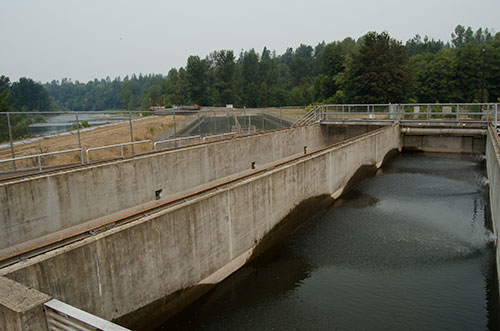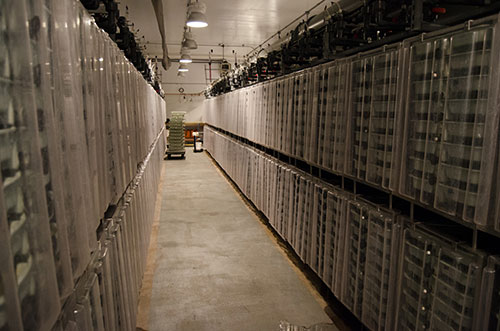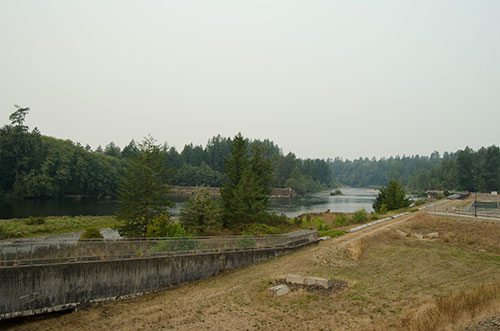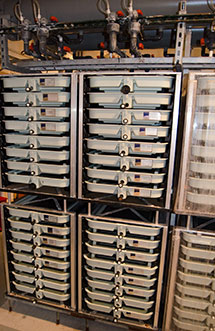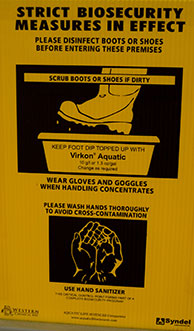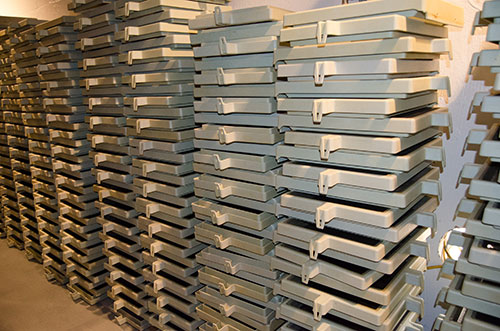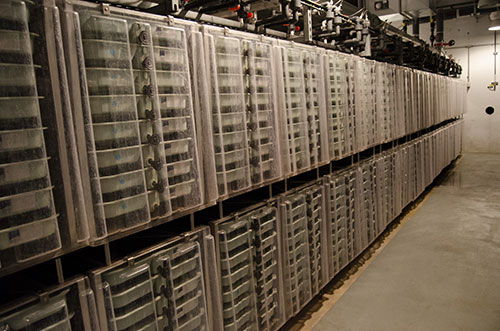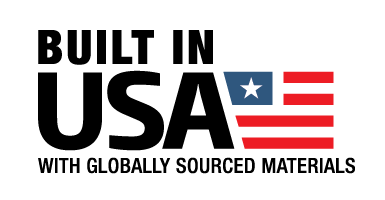Featured Hatchery: Cowlitz Salmon Hatchery
The Cowlitz Salmon Hatchery began operating in 1968 when Mossyrock Dam was completed. At the time, it was the largest salmon hatchery in the world. Tacoma Power built and maintains the salmon hatchery and provides funds to the Washington Department of Fish and Wildlife (WDFW) for staffing and operation.
Tacoma Power rebuilt the Cowlitz Salmon Hatchery in 2010 to more closely mimic nature during the early life stages of hatchery fish and to boost the number of adults that return.
The salmon hatchery releases 7.5 million fish each year, including spring Chinook, fall Chinook and coho salmon.
Special design features of the hatchery include:
- A system that allows young fish to swim into the river when they are ready to migrate downstream
- Re-designed raceways, or pools, that reduce the risk of disease for young fish
- Sorting facilities that are more efficient for adult fish and for the employees who sort them
- A re-circulating water treatment system that fine-tunes the water temperature to more closely match the river’s temperature
Hatchery Facts and Figures:
Hatchery Name & Location:
Cowlitz Salmon Hatchery
199 Salmon Ln.
Salkum, WA 98582 USA
Species raised:
- Spring Chinook Salmon (1.7 million annually)
- Fall Chinook Salmon (3.8 million annually)
- Late Run Coho Salmon (1.2 million annually)
Hatchery Manager:
Larona Newhouse
MariSource System & Components Used:
- MariSource 16 stack (#CPM5616)
- Isolation Panels (#CPM5626)
- Isolation Top Panel (#CPM5635)
- Water Tray Insert (#CPM5667)
- Drip Pan (#CPM5630)
- Egg Counter (#CPM5650)
The hatchery employees the following procedures using the MariSource Systems:
- Have water source going to top tray of each 8-stack at 3 gallons per minute (11.4 liters)
- Uses well water with recirculation system to maintain water temperature at 51°Fahrenheit or 10.5° Celsius (have run as low as 48° F or 8.9° C)
- Oxygen level is at 10.5
- Use top tray for filtration and rear discharge
- Eggs per tray= Chinook is 7,000; Coho is 8,000
Interview with hatchery manager, Larona Newhouse:
What are the advantages of the MariSource system and what tips to do suggest?
- MariSource systems allow you to isolate the eggs and screen for disease.
- Leave eggs in the trays until they have consumed their entire stomach. If you try to feed them too soon they will develop stomach rot.
- Make sure that you use PVC pipes and include air relief valves to prevent air locks in the recirculation system.
- Try not to use bends in your pipes and allow access for cleaning. Also make sure your floor allows for a solid base that allows a slight angle to the system so all air bubble will flow to the back of the trays.
- We treat our eggs with iodine prior to putting them in the MariSource system to help prevent disease.
How do you maintain your MariSource systems?
- Brush with an iodine solution and store in a dry covered area. (These systems have been maintained and used for over 15 years)
Photos:
